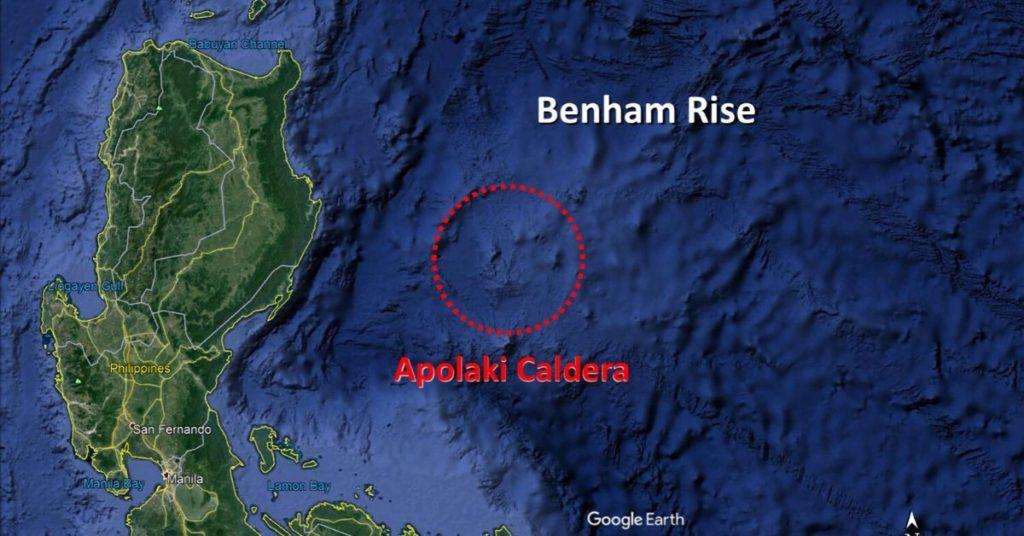FlipFact of the Day: The world’s largest known caldera (a volcanic feature formed after a volcano erupts and collapses) may actually be in Philippine territory.
Measuring approximately 150 km (93.2 mi), the Apolaki Caldera is a volcanic formation located in the Philippine Rise (or Benham Rise). It takes its name from the god of war and the sun in Filipino mythology.
A Filipina marine geophysicist, Jenny Anne Barretto, was part of the team that discovered Apolaki. They published a paper detailing the Philippine Rise’s morphology and formation, including more information on the Apolaki caldera:
[Benham Rise] consists of a main body (~310 km by 330 km) with the Narra, Loro and Molave Spurs extending 100–200 km from its eastern side. The main body is built on a shield platform from ~5200 m to ~3800 m sub-sea. The platform flanks consist of ~3–15 km wide terraces with scarps as high as 100 m to 300 m. The platform is surmounted by a crest exhibiting caldera morphology at an average depth of ~2500 m. The crest is named Apolaki Caldera and may be the world’s largest known caldera with a diameter of ~150 km. Features like a breached rim, intra-caldera benches, and a resurgent dome indicate a multi-phase volcanic history consisting of both quiet and explosive eruptions.
Today’s Science History Milestone: On October 22, 2008, India launched Chandrayaan-1, the nation’s first unmanned lunar mission.
Still remember your 5th-grade science classes? Test your knowledge and see if you still remember these facts and fundamental concepts in human anatomy, biology, botany, and other branches of science. Click here to try the “Are You Smarter Than A Pinoy Fifth-Grader” Challenge.
Follow the hashtag #FlipFacts on Facebook and Instagram to get your daily dose of science trivia!
Cover: Google Maps/UP MSI Geological Oceanography Laboratory
References
- https://www.sciencedirect.com/science/article/pii/S0025322719300684

Author: Mikael Angelo Francisco
Bitten by the science writing bug, Mikael has years of writing and editorial experience under his belt. As the editor-in-chief of FlipScience, Mikael has sworn to help make science more fun and interesting for geeky readers and casual audiences alike.






